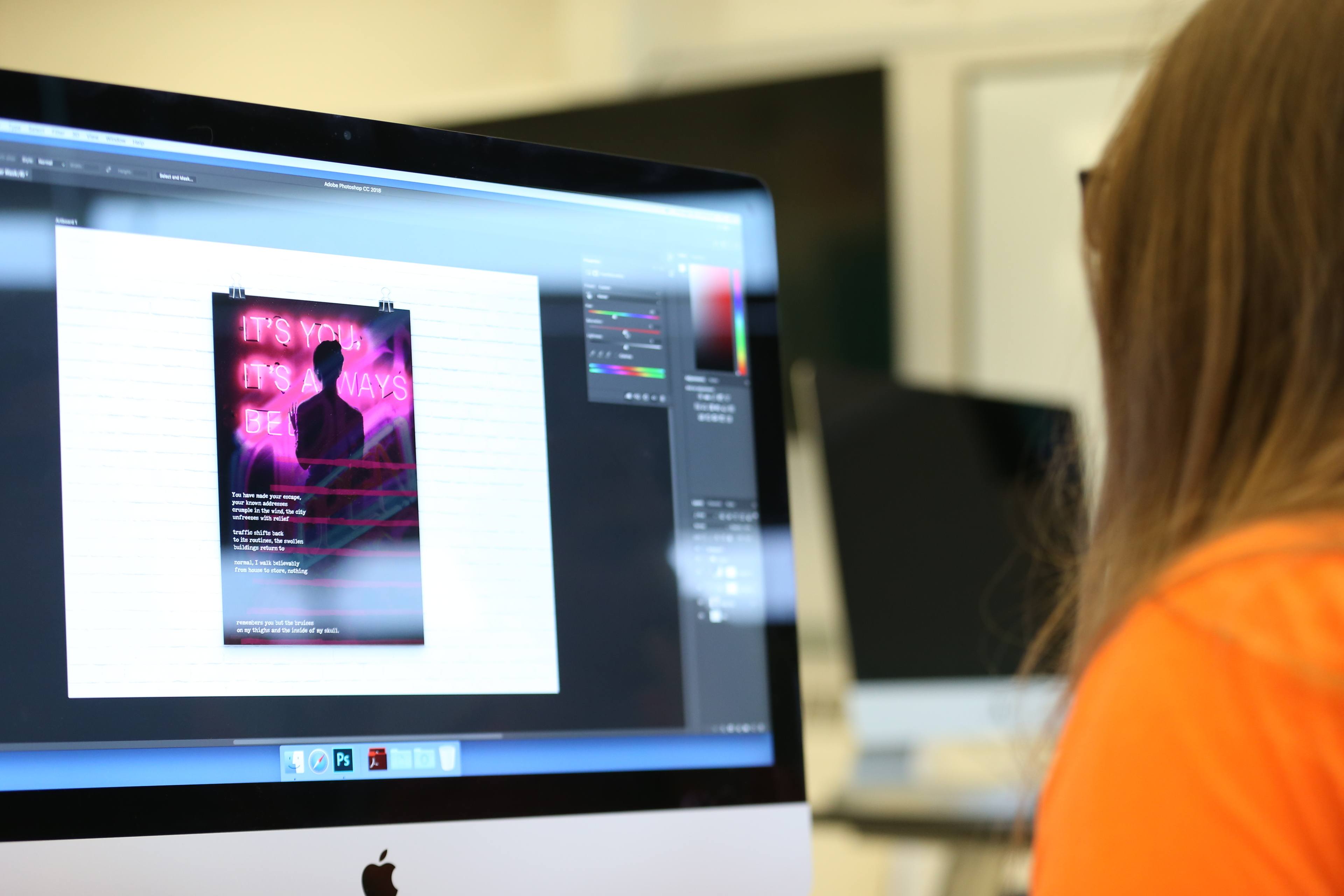
BGSU offers new Master of Design in Integrative Design degree in Fall 2021
Program prepares designers to be collaborative, strategic and social innovators
By Julie Carle
Bowling Green State University’s graphic design program is creating the next generation of designers to be collaborative, strategic thinkers and social innovators.
The new Master of Design (MDes) in Integrative Design degree at BGSU teaches creative, strategic and collaborative skillsets that prepare designers to think bigger. The inaugural program starts in Fall 2021.
“Design is no longer solely a brochure or a logo,” said Jenn Stucker, chair of BGSU’s graphic design division in the BGSU School of Art. “We think about design in a bigger context and not just an object.”
The social and cultural issues that surround us are complex systems that require designers to be strategic, creative and adaptive in their work, Stucker said. Today’s designers are leading interdisciplinary teams that are challenging the status quo on topics such as climate change, health care, education, diversity and inclusion, poverty and globalization.
The new master’s degree is offered as a low-residency, online-hybrid program that is ideal for working professionals and recent graduates who want to extend their impact, experiences and marketability within their profession.
The low-residency, online-hybrid structure makes the program unique.
“There are MDes degrees offered at a couple of Ohio universities and one in Michigan, but they all have residency requirements,” Stucker said. “Our program provides access for people to work their jobs and participate in the courses. It is also more affordable.”
Students will come to campus three weekends a semester – during weeks 5 and 10 and finals week – for the hybrid component. The three face-to-face weekend sessions allow for longer critiques and the opportunity to develop connections within the cohort.
The remainder of the semester, the courses are presented online. There are asynchronous parts, but mostly students will meet simultaneously with the cohort and their faculty.
There is also a six-week summer social innovation session that allows the group to work on a special innovation challenge, Stucker said. Students come together for the first week to ideate, plan and strategize on an innovative topic; the remainder of the summer session, done remotely, is for implementation and execution of the project, dividing the work among the teams. The challenges will be real-world projects in collaboration with community partners.
“We built the online-hybrid format before COVID-19 happened,” Stucker said. “I’m really even more excited about that now, because people have experienced online and virtual collaboration so it won’t feel like a big jump or hurdle for people.”
A total of 60 hours is required for degree completion. Students have the option to complete the program full-time in two years, or to attend part time and extend the timing to three or four years for people who need or want to go at a different pace.
“We built these different structures so people can be thinking about how they want to create their program of study,” Stucker said.
Among the strengths of the program is that 65% of the courses are studio-based, meeting the standards established by the accrediting body, the National Association of Schools of Art and Design (NASAD). The new program is in the process of seeking NASAD accreditation.
The curriculum also requires nine hours of design research and 12 hours of electives from such preapproved courses as arts, business, ethnic studies, media and communication, political science, popular culture, sociology and women’s studies. Interdisciplinary alternatives can be proposed to align with students’ interests. Required courses include Graphic Design History + Integrative Models, Design for Social Impact, and Design Research + Methods. Studio courses include Complex Systems, Context + Culture, Integrative Strategies, Theory + Implementation, Social Innovation I and II.
Additionally, there is a thesis component required for degree completion.
“Students will work on and develop their thesis throughout their time in the program,” Stucker said. “They will have a final output, which is traditionally an exhibition in MFA programs. In a visual communication program, it might not be an artwork display, but instead a very comprehensive online strategy.”
The program primarily appeals to design professionals; however, people who understand design or are working in design-related fields can benefit from the curriculum. They may have to add some design-basics courses to their studies, Stucker said, “but the wonderful thing about design is that so many people understand the value of it in today’s culture.
“They are the ones who want to be strategic and innovative design thinkers and leaders who are working on the big picture and it’s authentic impact and value.”
The demand for the integrative design skillsets will continue to increase, Stucker said. Employers are hiring designers and visual communicators in a wide variety of industry sectors ranging from advertising, marketing and media to insurance, health care, finance and government.
“There is no shortage of opportunities for employment with design-related skills, particularly skills that incorporate integrative thinking, leadership, management and critical thinking,” she said.
“Public good is at the heart of this degree purpose. BGSU and the School of Art encourage collaborative and interdisciplinary partnerships with corporate and nonprofit sectors, which expand the University’s impact.”
Join the BGSU Community. Apply for Free.
Stay in touch with us. Complete the express form.
Media Contact | Michael Bratton | mbratto@bgsu.edu | 419-372-6349
Updated: 10/21/2025 11:14AM
